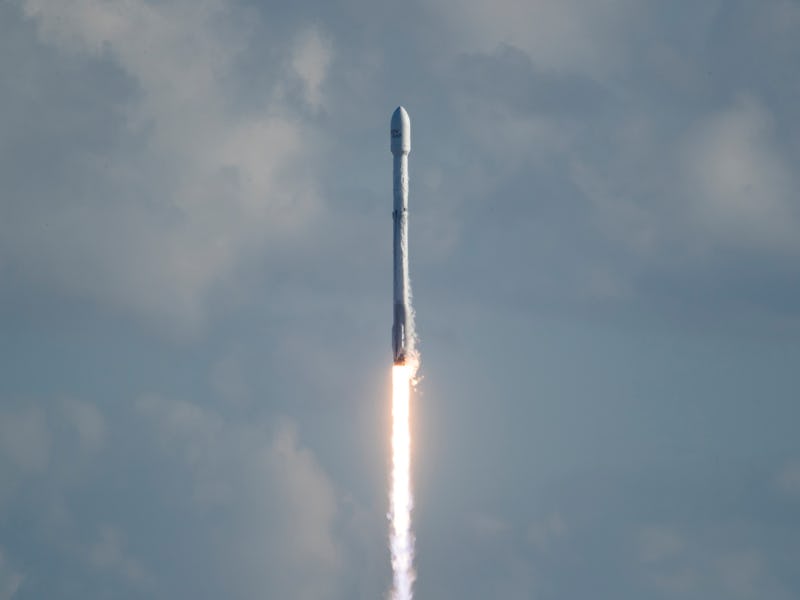Why SpaceX Might Attempt a Splashy, Ocean Rocket Landing on Sunday
"These are case-by-case decisions"

SpaceX’s next launch is set for Sunday morning, when a Falcon 9 rocket will send a Spanish security & defense satellite to low-Earth orbit after it launches at 6:16 a.m. local time from Vandenberg Air Base in Southern California. The rocket will not be recovered by SpaceX via a spectacular drone ship landing, but it’s possible the first-stage booster could make a splashy landing in the Pacific, if one compares this mission’s similarities to the last intentional SpaceX ocean landing.
SpaceX wasn’t forthcoming on Friday when asked why the rocket won’t land on a drone ship. That it won’t recover the Falcon 9 may seem like odd decision, because SpaceX is all about reusing as much of the rocket as possible to drive down costs, which in turn increases mission frequency, which in turn gives rocket scientists more data to improve rocket tech. All of this advancement goes toward SpaceX’s larger goal of sending humans to Mars.
“These are case-by-case decisions and are based on mission requirements and the needs of our manifest,” a SpaceX representative told Inverse when asked why it won’t recover the rocket.
It was same line that SpaceX gave press when it decided not to recover a Falcon 9 booster after a December 23, 2017 launch from Vandenberg (that was when people thought sunlight reflecting off rocket plumes were of alien origin).
“SpaceX will not attempt to recover Falcon 9’s first stage after launch,” was the company line ahead of the December mission, and the same phrasing is used in the mission press kit for Sunday. Also worth noting is that these launches are both from the same launch site.
There could be any number of reasons SpaceX won’t recover the rocket; what’s clear is Elon Musk’s aerospace company doesn’t want to get specific about it. There may be data that’s gathered from a water landing that’s more valuable than whatever benefits come from landing a rocket to reuse its parts. When SpaceX decided on the ocean landing for the December launch, it was to test landing equipment, theorized one blogger who looked at pre-launch photos.
The Falcon 9 scheduled to fly Sunday has already been to space and back, as this epic photo shows.
The rocket that will launch on Sunday seen here in this photo from August 2017 on the deck of 'Just Read the Instructions' after it returned to Earth.
It was used in August when it put into orbit the Formosat-5 satellite, a Taiwanese data-gathering satellite that passes over the country every two days. Interestingly, the last time the Pacific Ocean-based autonomous drone ship Just Read the Instructions was used was during that August mission.
The autonomous drone ship 'Just Read the Instructions' will remain dry on Sunday.
What’s also interesting about this launch is the additional payload. The company is expected to launch two Starlink satellites, part of its wider plan to send 4,425 satellites into orbit to bring broadband connectivity to the 57 percent of the globe without the internet. This feels like the future.
The Washington Post puts it plainly: SpaceX wants to beam Internet down to Earth.”
See also: Elon Musk Says SpaceX is Building a Third Drone Ship